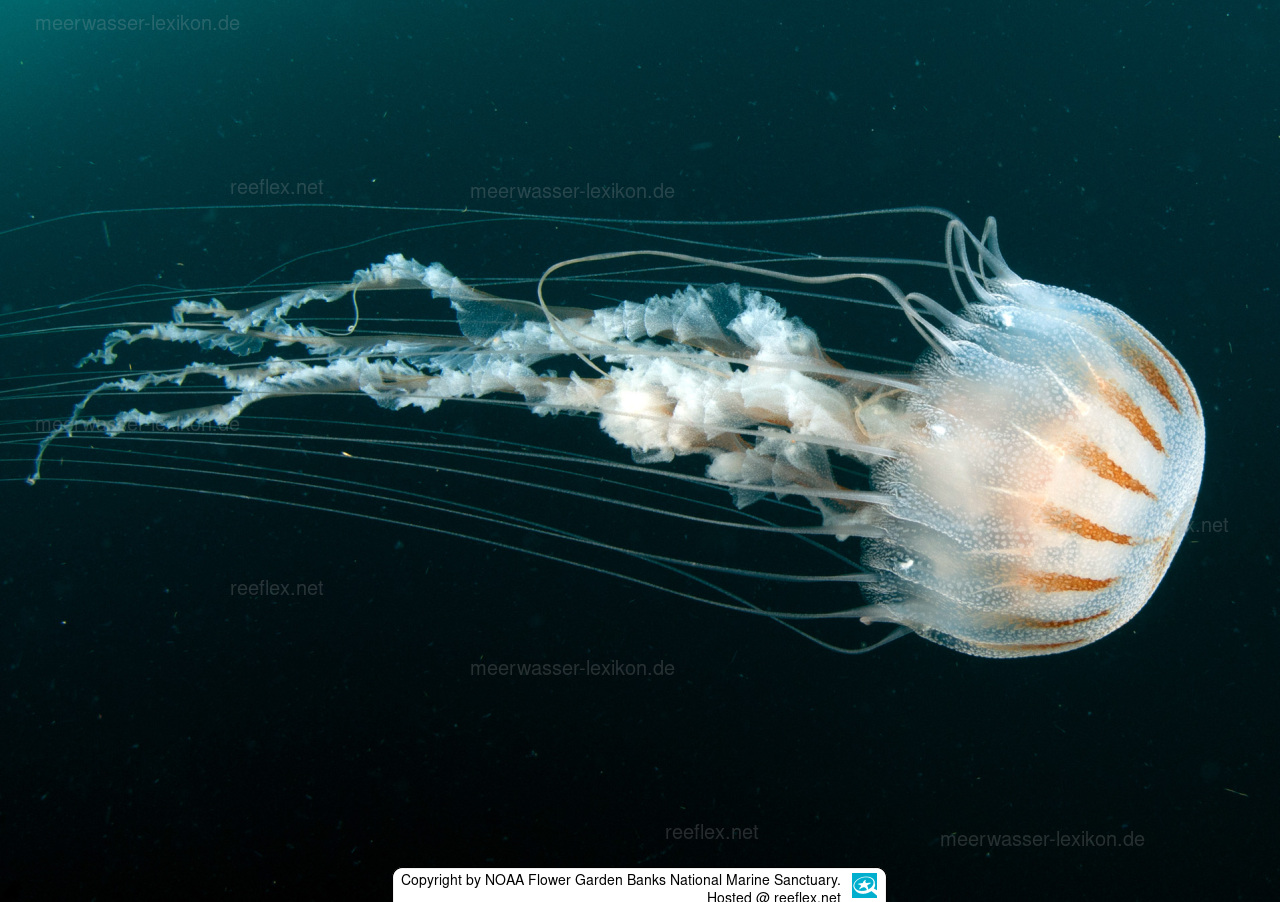Info
However, the jellyfish's venom is not strong enough to kill healthy people, but it can cause severe allergic skin reactions that may require medical attention. As an immediate measure, vinegar should be poured over the affected skin areas, as vinegar prevents further stinging cells from firing.
However, the venom is deadly to unsuspecting prey such as small fish, other jellyfish, and other zooplankton. After death, the victims are transported to the mouth below the umbrella with the help of the tentacles.
In addition to catching prey, the jellyfish's stinging cells have another function: they can stun and chase away potential predators.
Not suitable for aquariums!
Synonyms:
Dactylometra quinquecirrha Agassiz, 1862
Pelagia quinquecirrha Desor, 1848
Synonyms:
Dactylometra quinquecirrha Agassiz, 1862
Pelagia quinquecirrha Desor, 1848







 NOAA Flower Garden Banks National Marine Sanctuary
NOAA Flower Garden Banks National Marine Sanctuary












